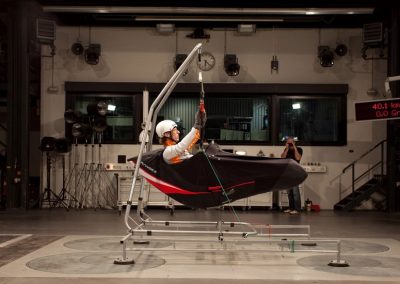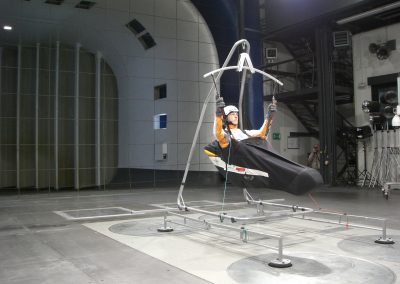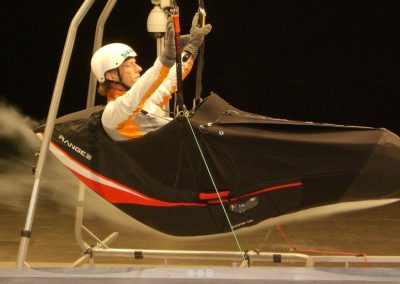JET FLAP Technology
Idea and development history: During a discussion of the skywalk development team on how to improve the stall of a surf kite, one idea among others surfaced – to try slotted flaps.
ADVANTAGES
Displacement occurs first at the spot where the use of the brakes causes a strong increase of bowing in the profile and the result is usually parachutal stall and then full stall. This is exactly where JET FLAPs come into play: Air is conducted from the bottom sail (pressure area) to the top sail (suction area) and there it is blown out. The stall is delayed, flyable minimum speed is reduced, and the pilot has more angle of attack reserve. This is of crucial importance during the critical phases of start and landing. Through a special wing design, we managed to ensure that the JET FLAP channel remains mostly closed during flight at trim speed and opens when the brake are applied.
...on the glider
Rigging the glider is much easier for the pilot as a glider with JET FLAPs requires fewer trim changes than a glider without JET FLAPs. Less trim changes mean more homogenous flight characteristics. The transition from slow flight to stall is considerably wider. Where a glider without flaps tips relatively abruptly backwards into stall, the JET FLAP glider can still be controlled and brought back into normal flight! The « green » range with JET FLAPs is noticeably larger. The climb performance of the wing is better and it is easier to turn in thermals.
...for the pilots
Lower flyable minimum speed. It is considerable easier for the pilot to fly slowly. The limit range is wider and more controllable. Like compared with the ABS brakes of an automobile. The limit range is also eased in this situation. Vol Libre Magazine published a test showing a blatant difference between a TEQUILA with effective JET FLAP System and with closed flaps: open FLAPS permit flying with up to 17% less speed! This means naturally, enormous reserves at the approach to stall. Better climb performance, above all in narrow and stronger thermals where the brakes must be activated in order to climb optimally. More room to play for developers because the implementation of JET FLAPS makes it possible to combine apparently contradictory properties: e.g. high agility and high damping. Increased brake travel until stall, so more safety while landing.





